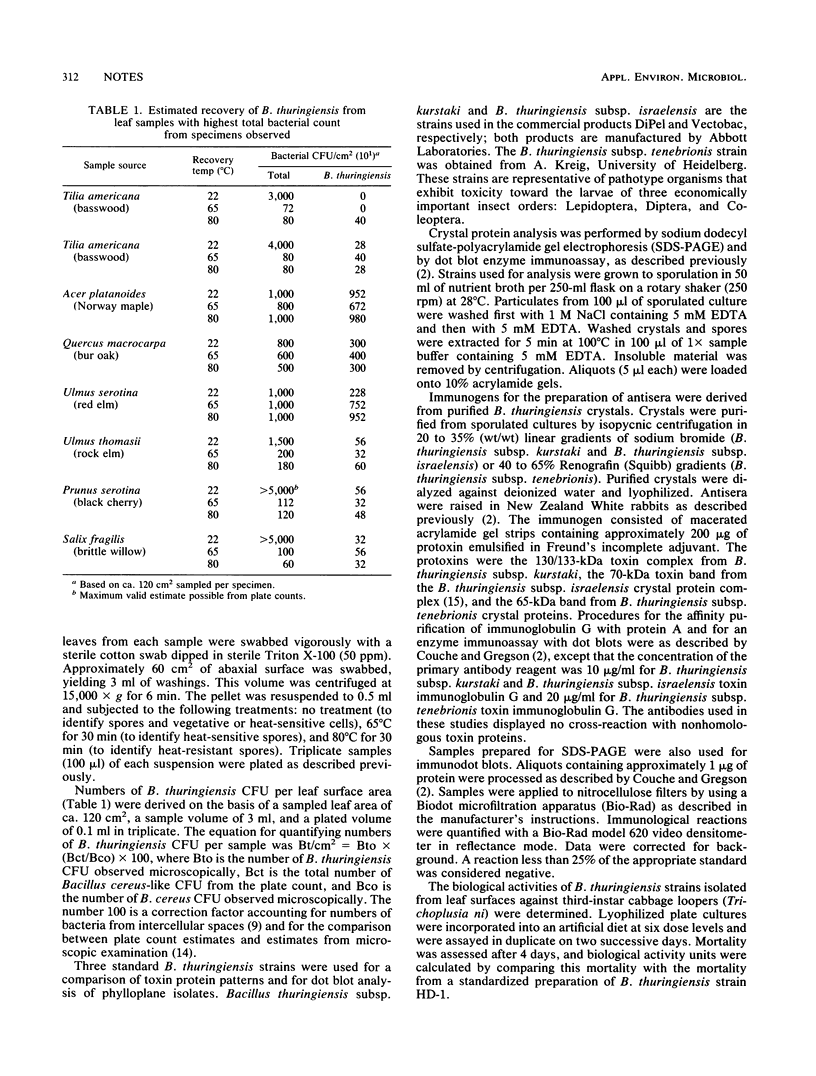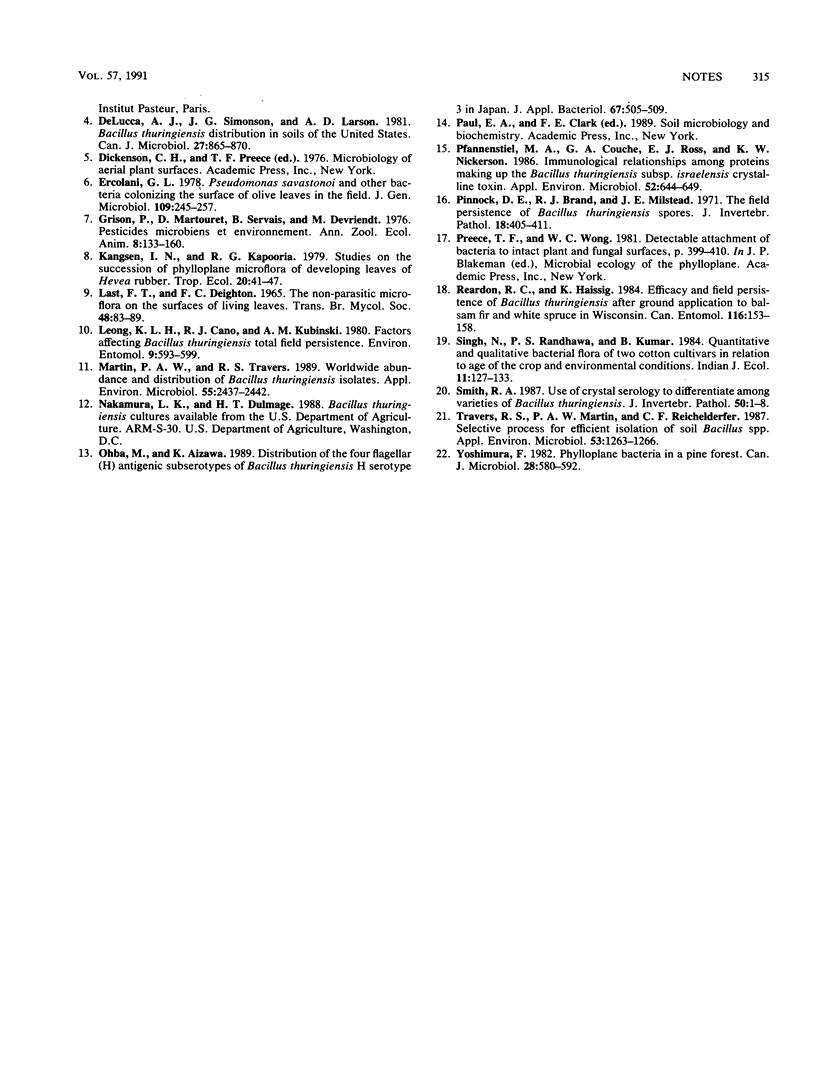Abstract
Novel variants of Bacillus thuringiensis were isolated from the phylloplane of deciduous and conifer trees as well as of other plants. These isolates displayed a range of toxicity towards Trichoplusia ni. Immunoblot and toxin protein analysis indicate that these strains included representatives of the three principal B. thuringiensis pathotypes active against larvae of the orders Lepidoptera, Diptera, and Coleoptera. We propose that B. thuringiensis be considered part of the common leaf microflora of many plants.
Full text
PDF




Images in this article
Selected References
These references are in PubMed. This may not be the complete list of references from this article.
- Couche G. A., Gregson R. P. Protein inclusions produced by the entomopathogenic bacterium Xenorhabdus nematophilus subsp. nematophilus. J Bacteriol. 1987 Nov;169(11):5279–5288. doi: 10.1128/jb.169.11.5279-5288.1987. [DOI] [PMC free article] [PubMed] [Google Scholar]
- DeLucca A. J., 2nd, Simonson J. G., Larson A. D. Bacillus thuringiensis distribution in soils of the United States. Can J Microbiol. 1981 Sep;27(9):865–870. doi: 10.1139/m81-137. [DOI] [PubMed] [Google Scholar]
- Martin P. A., Travers R. S. Worldwide Abundance and Distribution of Bacillus thuringiensis Isolates. Appl Environ Microbiol. 1989 Oct;55(10):2437–2442. doi: 10.1128/aem.55.10.2437-2442.1989. [DOI] [PMC free article] [PubMed] [Google Scholar]
- Pfannenstiel M. A., Couche G. A., Ross E. J., Nickerson K. W. Immunological relationships among proteins making up the Bacillus thuringiensis subsp. israelensis crystalline toxin. Appl Environ Microbiol. 1986 Oct;52(4):644–649. doi: 10.1128/aem.52.4.644-649.1986. [DOI] [PMC free article] [PubMed] [Google Scholar]
- Travers R. S., Martin P. A., Reichelderfer C. F. Selective Process for Efficient Isolation of Soil Bacillus spp. Appl Environ Microbiol. 1987 Jun;53(6):1263–1266. doi: 10.1128/aem.53.6.1263-1266.1987. [DOI] [PMC free article] [PubMed] [Google Scholar]



